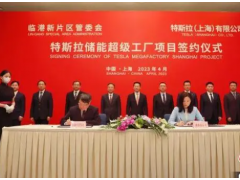On June 2, 2023, as the "Regional Comprehensive Economic Partnership Agreement" (RCEP) officially entered into force for the Philippines, RCEP will be implemented in all 15 member countries. RCEP is an important contribution to regional economic integration in Asia, embodies the characteristics and vitality of regional economic integration in the Asia-Pacific region, is a milestone in the process of regional integration in the Asia-Pacific region, and is a new demonstration of global regional economic cooperation. It has important practical significance and will play an important leading role in free trade in Asia and the world in the future.
RCEP has expanded the scale of trade between China and ASEAN and accelerated the economic and trade exchanges between China and ASEAN. On the one hand, the trade volume between China and ASEAN countries has continued to grow. In 2022, the import and export between China and ASEAN will be 6.52 trillion yuan, an increase of 15%, of which exports will be 3.79 trillion yuan, an increase of 21.7%, and imports will be 2.73 trillion yuan, an increase of 6.8%. The proportion of ASEAN in China's foreign trade has increased by 1 percentage point compared with 2021, reaching 15.5%, and it will continue to maintain China's largest trading partner status. In 2022, China's imports and exports to ASEAN will account for 50.3% of China's imports and exports to other RCEP member countries. From the perspective of the first quarter of this year, China’s import and export to ASEAN was 1.56 trillion yuan, a year-on-year increase of 16.1%, 11.3 percentage points higher than the overall growth rate, accounting for 15.8% of the total value of imports and exports, and imports and exports to other RCEP member countries increased by 7.3% . On the other hand, the policy dividend released by RCEP promotes two-way investment between China and ASEAN countries. At present, China and ASEAN are each other's largest trading partners, and the cumulative direct investment between the two sides has exceeded 310 billion US dollars. Since RCEP came into effect, many favorable policies such as tariff reduction and exemption and origin accumulation rules have been implemented one after another. RCEP has further formulated regionally unified, open and transparent trade and investment rules, allowing the value components of the origin of products to be accumulated in the region. The RCEP regional optimization of the supply chain layout of the industrial chain provides new options.
RCEP has promoted the optimization of China's import and export trade structure and accelerated the pace of transformation and upgrading of the manufacturing industry. On the one hand, the import and export trade structure between China and RCEP member countries has been continuously improved. In 2022, China's exports of mechanical and electrical products and labor-intensive products to other RCEP member countries will increase by 13.2% and 20.7% respectively, of which electronic components, batteries and automobiles will increase by 15%, 50.3% and 71.6% respectively. China's imports of mechanical and electrical products, metal ore and ore, and consumer goods from other RCEP member states accounted for 46.2%, 10.4%, and 10.2% respectively; the import value of energy products such as crude oil and natural gas grew rapidly. On the other hand, RCEP has also promoted the transformation and upgrading of China's manufacturing industry. China's import structure from RCEP countries has gradually upgraded from simple technology and intermediate technology-intensive manufactured products to intermediate technology and high-tech intensive manufactured products. At the same time, the proportion of resource-based manufactured products is relatively high, which reflects China's position in the global manufacturing industry chain is constantly improving towards intermediate technology and high technology, which also shows the continuous strengthening of the overall scale and strength of China's manufacturing industry. It needs to import more resource-based finished products to support the manufacturing industry. development, transformation and upgrading.
RCEP has accelerated the flow of economic factors, promoted the liberalization and facilitation of intra-regional trade and investment, and helped China's dual-cycle development pattern. RCEP promotes the free flow of economic elements in the region. The economic structure of each member is highly complementary, and the capital elements, technological elements, and labor elements in the region are complete. The effective implementation of RCEP is the flow of elements, market connectivity and industrial integration between China and ASEAN It will bring greater convenience, which will help to ensure China's domestic circulation. And with the strengthening of the localization and regionalization of the industrial chain and supply chain, the effective implementation of RCEP has stimulated the expansion and upgrading of the regional consumer market, and promoted the further development of the industrial chain, supply chain and value chain in the region.
RCEP adheres to the principles of free trade and future-oriented principles, and has established a unified system of economic and trade rules in the fields of market access, competition policy, intellectual property rights, e-commerce, and government procurement to cope with various challenges faced by the current economic globalization and maintain Competitiveness in the Asia-Pacific region to promote the sustainable development of Asia-Pacific countries. For China, RCEP plays a particularly prominent role in stabilizing foreign trade. In the future, China will continue to promote regional integration in the Asia-Pacific region under the RCEP framework, boost trade and investment, and contribute to rebuilding confidence in the multilateral trading system.
(The authors are respectively a professor at the School of International Relations of Beijing Foreign Studies University and a graduate student at Beijing Foreign Studies University)




